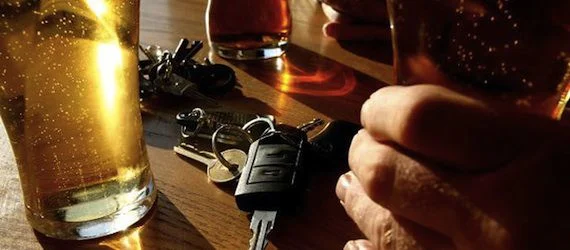According to a University of California, San Diego study of accidents in the United States published in the British Medical Journal group's Injury Prevention, "minimally buzzed" drivers are more often to blame for fatal car crashes than the sober drivers they collide with.
The study, led by UC San Diego sociologist David Phillips examined over 570,000 fatal collisions that took place between the years 1994 and 2011.
Using the official U.S. Fatality Analysis Reporting System (FARS) database for the study, because it is nationally comprehensive and because it reports on blood alcohol content (BAC) in increments of 0.01 percent, the team of researchers focused specifically on so called “buzzed drivers”, with BAC of 0.01 to 0.07 percent, and, within this group, the "minimally buzzed" (or BAC 0.01 percent).
The findings state that drivers with BAC 0.01 percent, well below the US legal limit of 0.08, are 46% more likely to be officially and solely blamed by accident investigators than are the sober drivers they collide with. It is further reported that there seems to be no "threshold effect", in other words there is no sudden transition from blameless to blamed, at the legal limit for drunk driving. Instead, blame increases steadily and smoothly from BAC 0.01to 0.24 percent.
Despite this evidence and in comparison to their sober counterparts, "buzzed" drivers are frequently not punished more severely. Phillips noted that police, judges and the public at large treat the official BAC 0.08% as "a sharp, definitive, meaningful boundary," which may be the reason why no severe penalties are imposed on those below the legal limit. According to Phillips, this needs to be addressed and the law should reflect the findings of official accident investigators.
In the study, the team of researchers measured blame by examining more than 50 driver factors coded in the FARS database, which include such straightforward factors as driving on the wrong side of the road or through a red light.
Commenting on the report Phillips said that the team found no safe combination of drinking and driving, highlighting that there was no point at which it was harmless to consume alcohol and get behind the wheel of a car. He went on to mention that the study data supported two initiatives: the National Highway Traffic Safety Administration's campaign that 'Buzzed driving is drunk driving' and the recommendation made by the National Transportation Safety Board to reduce the legal limit to BAC 0.05 percent. Phillips pointed out that the team’s data provided support for even greater reductions in the legal BAC.
Noting that federal agencies recommended reducing the legal BAC limit below 0.08 percent, he mentioned there had been very little research on the dangers of driving at very low levels of BAC to date. In conclusion Phillips pointed out that he and his team appeared to be the first researchers to have provided nationwide evidence on traffic accidents caused by minimally buzzed drivers.
Internationally there are more than 100 countries which have limits set at BAC 0.05% or lower and in urging all 50 U.S. states to follow suit, NTSB Chairman Deborah A.P. Hersman said in a statement last spring that alcohol-impaired crashes were not accident but crimes that could and should be prevented. She acknowledged that the tools to do so existed, and what was now needed was the will.
Source: ScienceDaily
20 January 2014
Latest Articles
Research, alcohol, drink and drive, BAC limit, accidents
According to a University of California, San Diego study of accidents in the United States published in the British Medical Journal group's Injury Preventi...


![Tuberculosis Diagnostics: The Promise of [18F]FDT PET Imaging Tuberculosis Diagnostics: The Promise of [18F]FDT PET Imaging](https://res.cloudinary.com/healthmanagement-org/image/upload/c_thumb,f_auto,fl_lossy,h_184,q_90,w_500/v1721132076/cw/00127782_cw_image_wi_88cc5f34b1423cec414436d2748b40ce.webp)







